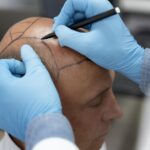Motor vehicle collisions can interfere with daily activities and physical balance. Among the usually neglected injuries, foot trauma is a key component of recovery.
Sprains, fractures, and nerve injuries compromise intrinsic foot muscles. These small but vital stabilizers control movement and balance. Neglecting these weaknesses creates instability, pain, and limited mobility.
Motor Vehicle Accident Physiotherapy in Edmonton provides a well-organized system to recover foot strength and regain function, promoting a balanced recovery process.
The Role of Intrinsic Foot Muscles in Movement and Stability
Understanding the Foot’s Hidden Power
The intrinsic foot muscles are a collection of small but essential stabilizers deep in the foot. These muscles are crucial for maintaining general foot function and stability by:
- Maintaining Arch Integrity: They support the foot’s natural arch and prevent structural failure.
- Absorbing Shock: These muscles help to transmit impact forces, minimizing joint stress.
- Enabling Gliding Movement: They allow appropriate gait mechanics, promoting effective and painless walking.
Ignoring such muscles following an accident can result in long-term instability, pain, and an inability to regain full mobility. Strengthening these muscles is vital for successful post-accident rehabilitation.
Why Foot Strength Matters After an Accident
Following an automobile accident, foot trauma, prolonged bed rest, or cast immobilization can severely compromise the intrinsic foot muscles. This can result in:
- Less Stability: Muscle weakness makes the foot less supportive, enhancing balance impairment.
- Chronic Pain: Incorrect weight distribution causes excessive stress on the foot and results in pain.
- Secondary Injuries: Foot instability can impact knees, hips, and lower back, raising the risk of injury.
Targeted physiotherapy exercises can restore strength to the foot, stabilize it, minimize pain, and enable overall recovery.
How Foot Weakness Affects Recovery After a Motor Vehicle Accident
Following a car accident, foot injuries—whether from direct trauma, immobilization, or nerve damage—can have a substantial impact on the body’s overall recovery. Unaddressed, these injuries will lead to chronic pain, reduced mobility, and permanent disability. Early treatment and a strict regimen prevent added complications and ensure recuperation.
The Chain Reaction: How Foot Dysfunction Impacts the Body
The feet are the pillars of movement. Weakened foot muscles do not offer the proper support, resulting in:
- Knee pain: Weak foot muscles change the gait, putting excess stress on the knees and causing joint misalignment.
- Hip pain: Compensation from improper foot stability necessitates the hips to work extra hard, thus leading to tension and discomfort.
- Lower back pain: Foundation instability impacts posture, resulting in poor spinal position and long-term back problems.
- Balance problems: Decreased foot strength reduces proprioception, elevating the risk of falling or re-injury.
Common Post-Accident Conditions Affecting the Foot
Motor vehicle crashes can result in several foot complications, such as:
- Plantar fasciitis: Overuse or improper foot mechanics can lead to plantar fasciitis, an inflammation of the plantar fascia.
- Arch Collapse: Inadequate intrinsic muscles are unable to support the foot arch, leading to flatfoot pain.
- Balance problems: Decreased proprioception in the feet results in instability, and falls are more likely to happen.
- Gait Abnormalities: Muscle weakness and nerve damage can lead to limping, uneven strides, or secondary movements.
- Nerve Damage and Swelling: Nerve compression or post-crash swelling may interfere with normal foot function and cause chronic pain, numbness, or persistent tingling.
Effective targeted physiotherapy alleviates these problems, recovers function, increases stability, and avoids late complications.
Physiotherapy Techniques for Strengthening Intrinsic Foot Muscles
Targeted Exercises for Foot Recovery
Strengthening the intrinsic muscles of the foot demands a well-organized physiotherapy strategy. Exercises used include:
- Toe curls: Targeting little foot muscles to enhance arch support.
- Short foot exercises: Engaging foot stabilizers to balance.
- Foot doming methods: Developing foot strength and resilience.
A progressive strengthening regimen provides for long-term stability and function.
Manual Therapy and Mobilization
Hands-on physiotherapy techniques help restore flexibility and circulation in the foot. These methods include:
- Joint mobilization: Improving foot joint range of motion and alignment.
- Soft tissue release: Reducing muscle tightness and promoting blood flow.
Manual therapy plays a crucial role in post-accident rehabilitation, ensuring optimal recovery.
Neuromuscular Training and Balance Work
Motor Vehicle Accident Physiotherapy in Edmonton utilizes neuromuscular training to retrain the control of the foot. These include:
- Proprioceptive exercises: Increasing awareness of foot placement within the body.
- Balance training: Foot muscle strengthening for enhanced stability and confidence in movement.
Retraining foot mechanics with neuromuscular exercises speeds up recovery.
Supportive Therapies for Optimal Recovery
Aside from strengthening therapy, other therapy supports rehabilitation following an accident:
- Custom orthotics: These offer mechanical support and adjustment of foot placement.
- Taping techniques: Facilitating muscle activation and minimizing stress on compromised foot structures.
These complementary treatments facilitate maximum recovery and avert subsequent complications.
Long-Term Benefits of Strengthening the Foot Post-Accident
A sound foundation avoids compensatory injuries and future mobility issues. The chief advantages of foot-strengthening physiotherapy are:
- Enhanced coordination and balance.
- Decreased risk of chronic pain and instability.
- Increased movement efficiency facilitates general recovery.
Regularly performing foot-strengthening exercises guarantees long-term results.
Rebuilding Stability After an Accident
Recovering from a motor vehicle accident involves a complete approach, and internal foot strength is vital in restoring mobility. Motor Vehicle Accident Physiotherapy in Edmonton aims to restore balance and stability through precise rehabilitation methods. Vertex Physiotherapy has qualified professionals who create recovery plans for individual patients to regain strength and confidence. Schedule an appointment today and embark on the journey towards overall well-being.








 /home/u448362301/domains/theexpotab.com/public_html/wp-content/themes/foxiz/templates/popup.php on line 167
/home/u448362301/domains/theexpotab.com/public_html/wp-content/themes/foxiz/templates/popup.php on line 167